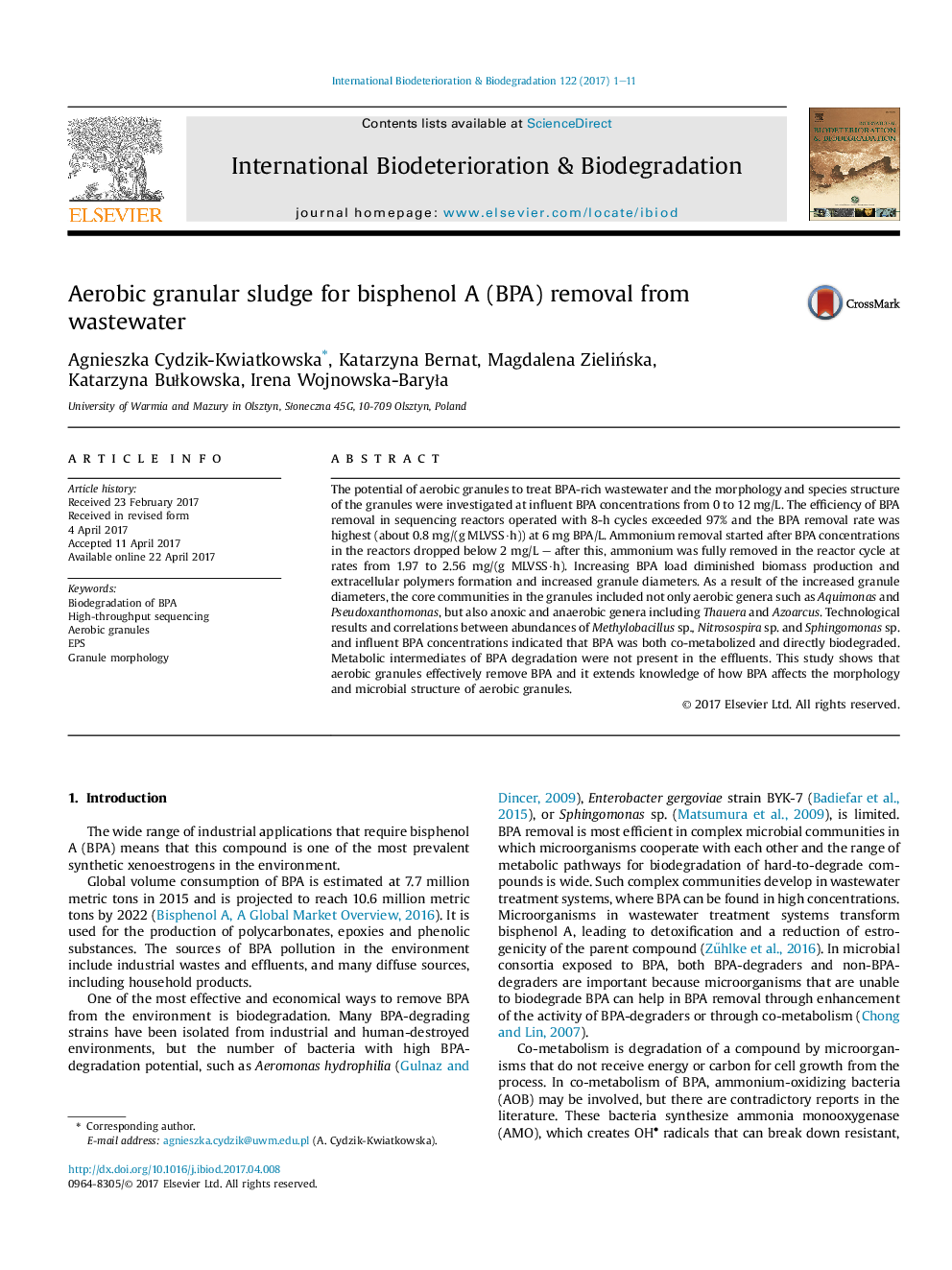| کد مقاله | کد نشریه | سال انتشار | مقاله انگلیسی | نسخه تمام متن |
|---|---|---|---|---|
| 5740355 | 1616295 | 2017 | 11 صفحه PDF | دانلود رایگان |

- Aerobic granules effectively removed BPA from wastewater (>97%).
- â¥6 mg BPA/L in the influent changed the kinetics of nitrogen and COD conversions.
- Higher BPA load decreased EPS content and increased diameter of granules (over 2Â mm).
- Sphingomonadaceae, Pusillimonas sp. as direct BPA-degraders in BPA-exposed granules.
- Nitrifiers and metylothrophs co-metabolizing BPA constituted over 30% of the biomass.
The potential of aerobic granules to treat BPA-rich wastewater and the morphology and species structure of the granules were investigated at influent BPA concentrations from 0 to 12 mg/L. The efficiency of BPA removal in sequencing reactors operated with 8-h cycles exceeded 97% and the BPA removal rate was highest (about 0.8 mg/(g MLVSS·h)) at 6 mg BPA/L. Ammonium removal started after BPA concentrations in the reactors dropped below 2 mg/L - after this, ammonium was fully removed in the reactor cycle at rates from 1.97 to 2.56 mg/(g MLVSS·h). Increasing BPA load diminished biomass production and extracellular polymers formation and increased granule diameters. As a result of the increased granule diameters, the core communities in the granules included not only aerobic genera such as Aquimonas and Pseudoxanthomonas, but also anoxic and anaerobic genera including Thauera and Azoarcus. Technological results and correlations between abundances of Methylobacillus sp., Nitrosospira sp. and Sphingomonas sp. and influent BPA concentrations indicated that BPA was both co-metabolized and directly biodegraded. Metabolic intermediates of BPA degradation were not present in the effluents. This study shows that aerobic granules effectively remove BPA and it extends knowledge of how BPA affects the morphology and microbial structure of aerobic granules.
Journal: International Biodeterioration & Biodegradation - Volume 122, August 2017, Pages 1-11